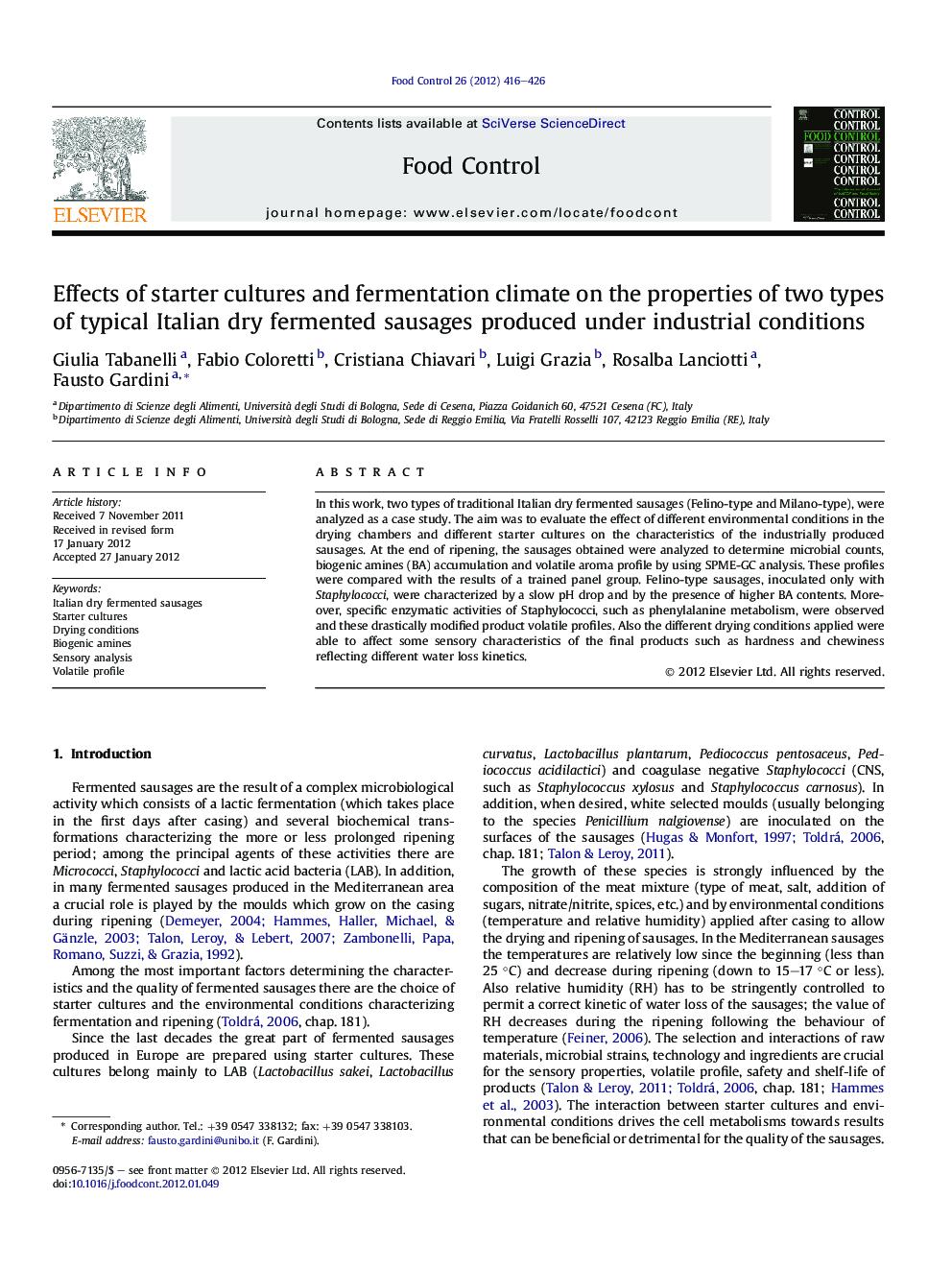| Article ID | Journal | Published Year | Pages | File Type |
|---|---|---|---|---|
| 6393886 | Food Control | 2012 | 11 Pages |
In this work, two types of traditional Italian dry fermented sausages (Felino-type and Milano-type), were analyzed as a case study. The aim was to evaluate the effect of different environmental conditions in the drying chambers and different starter cultures on the characteristics of the industrially produced sausages. At the end of ripening, the sausages obtained were analyzed to determine microbial counts, biogenic amines (BA) accumulation and volatile aroma profile by using SPME-GC analysis. These profiles were compared with the results of a trained panel group. Felino-type sausages, inoculated only with Staphylococci, were characterized by a slow pH drop and by the presence of higher BA contents. Moreover, specific enzymatic activities of Staphylococci, such as phenylalanine metabolism, were observed and these drastically modified product volatile profiles. Also the different drying conditions applied were able to affect some sensory characteristics of the final products such as hardness and chewiness reflecting different water loss kinetics.
⺠Using only Staphylococci as starter cultures enhances the biogenic amine accumulation. ⺠Different enzymatic activities of staphylococci drastically modify volatile profiles. ⺠The drying conditions in the first days influence the sausage texture after ripening.
